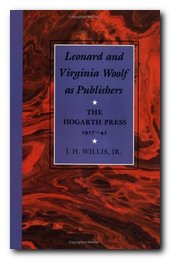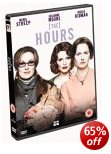tutorial, characters, video, resources, further reading
Orlando (1927) is one of Virginia Woolf’s lesser-known novels, although it’s critical reputation has risen in recent years. It’s a delightful fantasy which features a character who changes sex part-way through the book – and lives from the sixteenth to the twentieth century. Using this device (which turns out to be strangely credible) Woolf explores issues of gender and identity as her hero-heroine moves through a variety of lives and personal adventures.

Virginia Woolf
Orlando starts out as an emissary to the Court of St James, lives through friendships with Swift and Alexander Pope, and ends up motoring through the west end of London on a shopping expedition in the 1920s. The character is loosely based on Vita Sackville-West, who at the time was Woolf’s lover. The novel itself was described by Nigel Nicolson (Sackville-West’s son) as ‘the longest and most charming love-letter in literature’.
Orlando – plot summary
The novel tells the story of a young man named Orlando, born in England during the reign of Elizabeth I, who decides not to grow old. He is briefly a lover to the decrepit queen, but after her death has a brief, intense love affair with Sasha, a princess in the entourage of the Russian embassy. This episode, of love and excitement against the background of the Great Frost of 1683, is one of the best known, and is said to represent Vita Sackville-West’s affair with Violet Trefusis.
 Following Sasha’s return to Russia, the desolate, lonely Orlando returns to writing The Oak Tree, a poem started and abandoned in his youth. This period of contemplating love and life leads him to appreciate the value of his ancestral stately home, which he proceeds to furnish lavishly and then plays host to the populace. Ennui sets in and a persistent suitor’s harassment leads to Orlando’s appointment by King Charles II as British ambassador to Constantinople. Orlando performs his duties well, until a night of civil unrest and murderous riots. He falls asleep for a lengthy period, resisting all efforts to rouse him.
Following Sasha’s return to Russia, the desolate, lonely Orlando returns to writing The Oak Tree, a poem started and abandoned in his youth. This period of contemplating love and life leads him to appreciate the value of his ancestral stately home, which he proceeds to furnish lavishly and then plays host to the populace. Ennui sets in and a persistent suitor’s harassment leads to Orlando’s appointment by King Charles II as British ambassador to Constantinople. Orlando performs his duties well, until a night of civil unrest and murderous riots. He falls asleep for a lengthy period, resisting all efforts to rouse him.
Upon awakening he finds that he has metamorphosed into a woman—the same person, with the same personality and intellect, but in a woman’s body. For this reason, the now Lady Orlando covertly escapes Constantinople in the company of a Gypsy clan, adopting their way of life until its essential conflict with her upbringing leads her to head home. Only on the ship back to England, with her constraining female clothes and an incident in which a flash of her ankle nearly results in a sailor’s falling to his death, does she realise the magnitude of becoming a woman; yet she concludes the overall advantages, declaring ‘Praise God I’m a woman!’
Orlando becomes caught up in the life of the eighteenth and nineteenth centuries, holding court with the great poets (notably Alexander Pope), winning a lawsuit and marrying a sea captain. In 1928, she publishes The Oak Tree centuries after starting it, and winning a prize.
Study resources
![]() Orlando – Oxford World Classics – Amazon UK
Orlando – Oxford World Classics – Amazon UK
![]() Orlando – Oxford World Classics – Amazon US
Orlando – Oxford World Classics – Amazon US
![]() Orlando – Wordsworth Classics – Amazon UK
Orlando – Wordsworth Classics – Amazon UK
![]() Orlando – Wordsworth Classics – Amazon US
Orlando – Wordsworth Classics – Amazon US
![]() Orlando – Vintage Classics edition – Amazon UK
Orlando – Vintage Classics edition – Amazon UK
![]() Orlando – free eBook editions
Orlando – free eBook editions
![]() Orlando – audio book (abridged) – Amazon UK
Orlando – audio book (abridged) – Amazon UK
![]() Orlando – a film screenplay = Amazon UK
Orlando – a film screenplay = Amazon UK
![]() The Complete Works of Virginia Woolf – Kindle edition – Amazon UK
The Complete Works of Virginia Woolf – Kindle edition – Amazon UK
![]() Virginia Woolf – biographical notes
Virginia Woolf – biographical notes
![]() Orlando – Sally Potter’s 1992 film adaptation – Amazon UK
Orlando – Sally Potter’s 1992 film adaptation – Amazon UK
![]() Selected Essays – by Virginia Woolf – Amazon UK
Selected Essays – by Virginia Woolf – Amazon UK
![]() The Cambridge Companion to Virginia Woolf – Amazon UK
The Cambridge Companion to Virginia Woolf – Amazon UK
![]() Virginia Woolf – Authors in Context – Amazon UK
Virginia Woolf – Authors in Context – Amazon UK
![]() Orlando – Sally Potter’s film archive
Orlando – Sally Potter’s film archive
![]() The Cambridge Introduction to Virginia Woolf – Amazon UK
The Cambridge Introduction to Virginia Woolf – Amazon UK
![]() Virginia Woolf at Wikipedia – biographical notes, links,
Virginia Woolf at Wikipedia – biographical notes, links,
![]() Virginia Woolf at Mantex – tutorials, web links, study resources
Virginia Woolf at Mantex – tutorials, web links, study resources
Orlando – film version
1992 film adaptation by Sally Potter
![]() See reviews of the film at the Internet Movie Database
See reviews of the film at the Internet Movie Database
Orlando – principal characters
| Orlando | the protangonist – a man, then a woman |
| Sasha | a Russian princess, who Orlando loves |
| Shel | a gallant seaman, in love with Orlando |
| Archduke Harry | a cross-dresser who is in love with Orlando |
| Sir Nicholas Greene | a 17C poet then later a 19C critic |
| Alexander Pope | himself – an 18C poet |
| Rustum | an old Turkish gypsy |
| Queen Elizabeth I | English monarch, in love with Orlando |
| Rosina Pepita | a Spanish gypsy dancer |
| Clorinda | a mamber of St James’s court |
| Favilla | the second of Orlando’s loves at court |
| Euphrosyne | Orlando’s ‘intended’ before he runs off with Sasha |

Further reading
![]() Bell, Quentin. Virginia Woolf: A Biography. New York: Harcourt Brace Jovanovich, 1972.
Bell, Quentin. Virginia Woolf: A Biography. New York: Harcourt Brace Jovanovich, 1972.
![]() Lee, Hermione. Virginia Woolf. New York: Alfred A. Knopf, 1997.
Lee, Hermione. Virginia Woolf. New York: Alfred A. Knopf, 1997.
![]() Marsh, Nicholas. Virginia Woolf, the Novels. New York: St. Martin’s Press, 1998.
Marsh, Nicholas. Virginia Woolf, the Novels. New York: St. Martin’s Press, 1998.
![]() Mepham, John. Virginia Woolf. New York: St. Martin’s Press, 1992.
Mepham, John. Virginia Woolf. New York: St. Martin’s Press, 1992.
![]() Reinhold, Natalya, ed. Woolf Across Cultures. New York: Pace University Press, 2004.
Reinhold, Natalya, ed. Woolf Across Cultures. New York: Pace University Press, 2004.
![]() Rosenthal, Michael. Virginia Woolf: A Critical Study. New York: Columbia University Press, 1979.
Rosenthal, Michael. Virginia Woolf: A Critical Study. New York: Columbia University Press, 1979.
![]() Sellers, Susan, The Cambridge Companion to Vit=rginia Woolf, Cambridge University Press, 2010.
Sellers, Susan, The Cambridge Companion to Vit=rginia Woolf, Cambridge University Press, 2010.
![]() Showalter, Elaine. ‘Mrs. Dalloway: Introduction’. In Virginia Woolf: Introductions to the Major Works, edited by Julia Briggs. London: Virago Press, 1994.
Showalter, Elaine. ‘Mrs. Dalloway: Introduction’. In Virginia Woolf: Introductions to the Major Works, edited by Julia Briggs. London: Virago Press, 1994.
![]() Woolf, Virginia. The Common Reader. New York: Harvest Books, 2002.
Woolf, Virginia. The Common Reader. New York: Harvest Books, 2002.
![]() Zwerdling, Alex. Virginia Woolf and the Real World. Berkeley: University of California Press, 1986.
Zwerdling, Alex. Virginia Woolf and the Real World. Berkeley: University of California Press, 1986.
Original inspiration
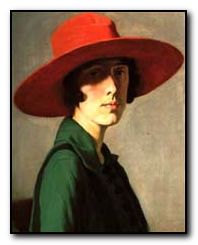
Vita Sackville-West
Knole – Kent, UK
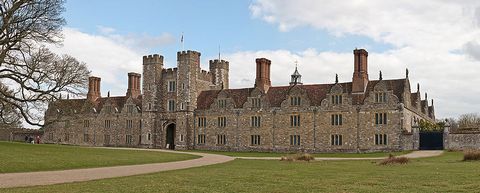
365 rooms, 52 staircases, 12 entrances and 7 courtyards
Other works by Virginia Woolf
 To the Lighthouse (1927) is the second of the twin jewels in the crown of her late experimental phase. It is concerned with the passage of time, the nature of human consciousness, and the process of artistic creativity. Woolf substitutes symbolism and poetic prose for any notion of plot, and the novel is composed as a tryptich of three almost static scenes – during the second of which the principal character Mrs Ramsay dies – literally within a parenthesis. The writing is lyrical and philosophical at the same time. Many critics see this as her greatest achievement, and Woolf herself realised that with this book she was taking the novel form into hitherto unknown territory.
To the Lighthouse (1927) is the second of the twin jewels in the crown of her late experimental phase. It is concerned with the passage of time, the nature of human consciousness, and the process of artistic creativity. Woolf substitutes symbolism and poetic prose for any notion of plot, and the novel is composed as a tryptich of three almost static scenes – during the second of which the principal character Mrs Ramsay dies – literally within a parenthesis. The writing is lyrical and philosophical at the same time. Many critics see this as her greatest achievement, and Woolf herself realised that with this book she was taking the novel form into hitherto unknown territory.
![]() Buy the book at Amazon UK
Buy the book at Amazon UK
![]() Buy the book at Amazon US
Buy the book at Amazon US
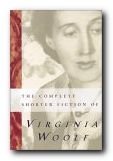 The Complete Shorter Fiction contains all the classic short stories such as The Mark on the Wall, A Haunted House, and The String Quartet – but also the shorter fragments and experimental pieces such as Mrs Dalloway in Bond Street. These ‘sketches’ (as she called them) were used to practice the techniques she used in her longer fictions. Nearly fifty pieces written over the course of Woolf’s writing career are arranged chronologically to offer insights into her development as a writer. This is one for connoisseurs – well presented and edited in a scholarly manner.
The Complete Shorter Fiction contains all the classic short stories such as The Mark on the Wall, A Haunted House, and The String Quartet – but also the shorter fragments and experimental pieces such as Mrs Dalloway in Bond Street. These ‘sketches’ (as she called them) were used to practice the techniques she used in her longer fictions. Nearly fifty pieces written over the course of Woolf’s writing career are arranged chronologically to offer insights into her development as a writer. This is one for connoisseurs – well presented and edited in a scholarly manner.
![]() Buy the book at Amazon UK
Buy the book at Amazon UK
![]() Buy the book at Amazon US
Buy the book at Amazon US
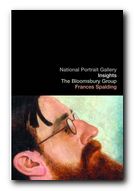 The Bloomsbury Group is a short but charming book, published by the National Portrait Gallery. It explores the impact of Bloomsbury personalities on each other, plus how they shaped the development of British modernism in the early part of the twentieth century. But most of all it’s a delightful collection of portrait paintings and photographs, with biographical notes. It has an introductory essay which outlines the development of Bloomsbury, followed by a series of portraits and the biographical sketches of the major figures.
The Bloomsbury Group is a short but charming book, published by the National Portrait Gallery. It explores the impact of Bloomsbury personalities on each other, plus how they shaped the development of British modernism in the early part of the twentieth century. But most of all it’s a delightful collection of portrait paintings and photographs, with biographical notes. It has an introductory essay which outlines the development of Bloomsbury, followed by a series of portraits and the biographical sketches of the major figures.
![]() Buy the book at Amazon UK
Buy the book at Amazon UK
![]() Buy the book at Amazon US
Buy the book at Amazon US
Virginia Woolf – web links
![]() Virginia Woolf at Mantex
Virginia Woolf at Mantex
Biographical notes, study guides to the major works, book reviews, studies of the short stories, bibliographies, web links, study resources.
![]() Blogging Woolf
Blogging Woolf
Book reviews, Bloomsbury related issues, links, study resources, news of conferences, exhibitions, and events, regularly updated.
![]() Virginia Woolf at Wikipedia
Virginia Woolf at Wikipedia
Full biography, social background, interpretation of her work, fiction and non-fiction publications, photograph albumns, list of biographies, and external web links
![]() Virginia Woolf at Gutenberg
Virginia Woolf at Gutenberg
Selected eTexts of the novels The Voyage Out, Night and Day, Jacob’s Room, and the collection of stories Monday or Tuesday in a variety of digital formats.
![]() Woolf Online
Woolf Online
An electronic edition and commentary on To the Lighthouse with notes on its composition, revisions, and printing – plus relevant extracts from the diaries, essays, and letters.
![]() Hyper-Concordance to Virginia Woolf
Hyper-Concordance to Virginia Woolf
Search texts of all the major novels and essays, word by word – locate quotations, references, and individual terms
![]() Virginia Woolf – a timeline in phtographs
Virginia Woolf – a timeline in phtographs
A collection of well and lesser-known photographs documenting Woolf’s life from early childhood, through youth, marriage, and fame – plus some first edition book jackets – to a soundtrack by Philip Glass. They capture her elegant appearance, the big hats, and her obsessive smoking. No captions or dates, but well worth watching.
![]() Women’s History Walk in Bloomsbury
Women’s History Walk in Bloomsbury
Tour of literary and political homes in Bloomsbury – including Gordon Square, Gower Street, Bedford Square, Tavistock Square, plus links to women’s history web sites.
![]() Virginia Woolf Society of Great Britain
Virginia Woolf Society of Great Britain
Bulletins of events, annual lectures, society publications, and extensive links to Woolf and Bloomsbury related web sites
![]() BBC Audio Essay – A Eulogy to Words
BBC Audio Essay – A Eulogy to Words
Charming sound recording of radio talk given by Virginia Woolf in 1937 – a podcast accompanied by a slideshow of photographs.
![]() A Family Photograph Albumn
A Family Photograph Albumn
Leslie Stephen compiled a photograph album and wrote an epistolary memoir, known as the “Mausoleum Book,” to mourn the death of his wife, Julia, in 1895 – an archive at Smith College – Massachusetts
![]() Virginia Woolf first editions
Virginia Woolf first editions
Hogarth Press book jacket covers of the first editions of Woolf’s novels, essays, and stories – largely designed by her sister, Vanessa Bell.
![]() Virginia Woolf – on video
Virginia Woolf – on video
Biographical studies and documentary videos with comments on Virginia Woolf and the Bloomsbury Group and the social background of their times.
![]() Virginia Woolf Miscellany
Virginia Woolf Miscellany
An archive of academic journal essays 2003—2014, featuring news items, book reviews, and full length studies.
© Roy Johnson 2010
More on Virginia Woolf
Virginia Woolf – web links
Virginia Woolf – greatest works
Virginia Woolf – criticism
More on the Bloomsbury Group
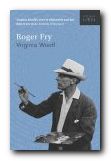
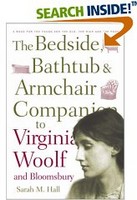
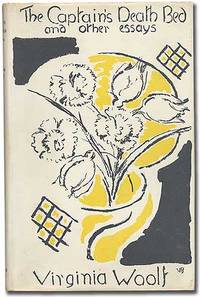

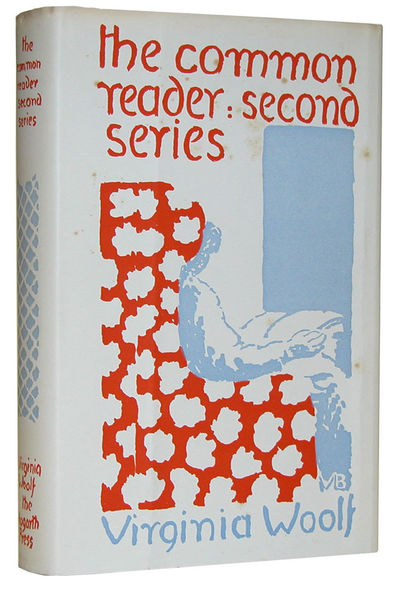
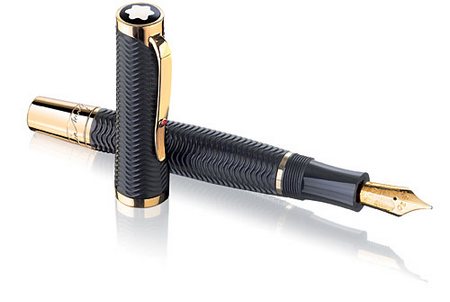
 Kew Gardens
Kew Gardens Virginia Woolf
Virginia Woolf
